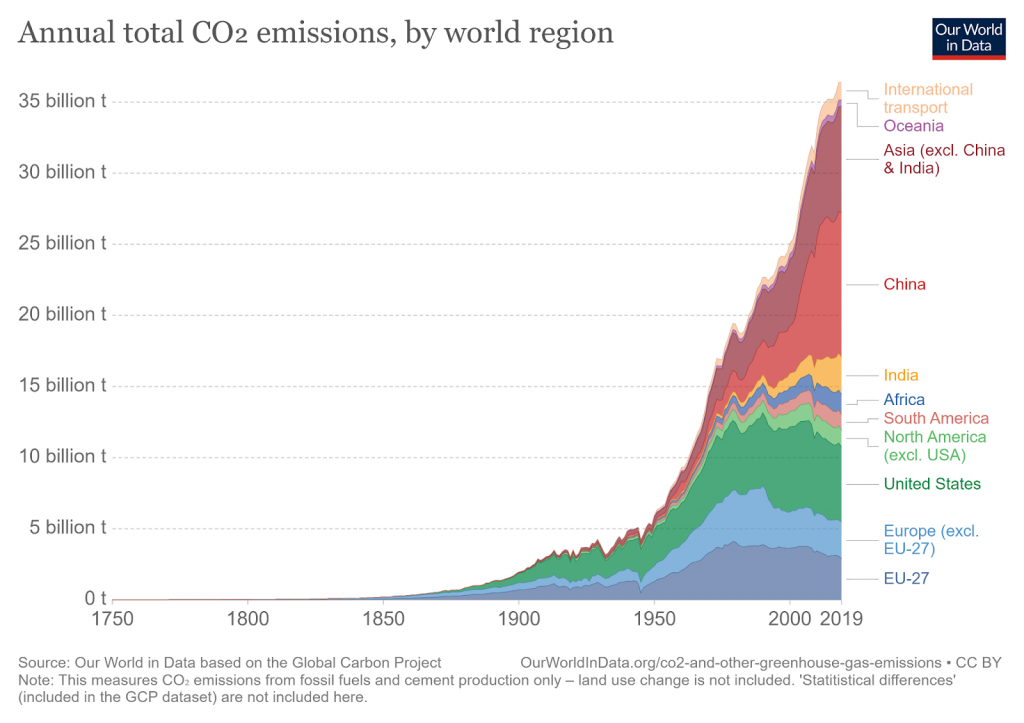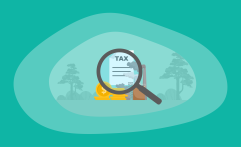Renewable Energy Credits (RECs) Explained: All You Need to Know
Affiliate Disclosure
Hey fellow impactful ninja ?
You may have noticed that Impactful Ninja is all about providing helpful information to make a positive impact on the world and society. And that we love to link back to where we found all the information for each of our posts.
Most of these links are informational-based for you to check out their primary sources with one click.
But some of these links are so-called "affiliate links" to products that we recommend.
Why do we add these product links?
First and foremost, because we believe that they add value to you. For example, when we wrote a post about the environmental impact of long showers, we came across an EPA recommendation to use WaterSense showerheads. So we linked to where you can find them. Or, for many of our posts, we also link to our favorite books on that topic so that you can get a much more holistic overview than one single blog post could provide.
And when there is an affiliate program for these products, we sign up for it. For example, as Amazon Associates, we earn from qualifying purchases.
What do these affiliate links mean for you?
First, and most importantly, we still only recommend products that we believe add value for you.
When you buy something through one of our affiliate links, we may earn a small commission - but at no additional costs to you.
And when you buy something through a link that is not an affiliate link, we won’t receive any commission but we’ll still be happy to have helped you.
What do these affiliate links mean for us?
When we find products that we believe add value to you and the seller has an affiliate program, we sign up for it.
When you buy something through one of our affiliate links, we may earn a small commission (at no extra costs to you).
And at this point in time, all money is reinvested in sharing the most helpful content with you. This includes all operating costs for running this site and the content creation itself.
What does this mean for me personally?
You may have noticed by the way Impactful Ninja is operated that money is not the driving factor behind it. It is a passion project of mine and I love to share helpful information with you to make a positive impact on the world and society. However, it's a project in that I invest a lot of time and also quite some money.
Eventually, my dream is to one day turn this passion project into my full-time job and provide even more helpful information. But that's still a long time to go.
Stay impactful,
Renewable Energy Credits (RECs) aim to reduce global carbon emissions by bolstering the renewable energy market. Switching from fossil fuels to renewable energy could lead to fewer carbon emissions and a healthier planet for future generations. So, we had to ask: What are RECs really, and could they help us mitigate climate change?
Renewable Energy Credits are certificates that allow you to claim that the electricity you use came from a renewable resource with low or zero-carbon emissions. And while they do reduce your own carbon footprint, market oversaturation and cheap prices limit their global effectiveness.
Keep reading to find out what RECs are, the impact you can have with them both individually and globally, their benefits and drawbacks, and why they may not be the most effective way to mitigate climate change.
The Big Picture of Renewable Energy Credits (RECs)
Renewable Energy Credits (RECs) represent the attributes of renewable energy that are generated and delivered to our power grid. Renewable energy (i.e., solar, wind, hydro, geothermal, or biomass) is an energy source that is in infinite supply and is regenerated naturally.
“Renewable Energy: energy that is produced using the sun, wind, etc., or from crops, rather than using fuels such as oil or coal | types of energy that can be replaced naturally such as energy produced from wind or water”
Cambridge Dictionary
RECs allow you to claim that the electricity you use came from a renewable resource with low or zero-greenhouse gas emissions. They are a form of climate currency that are used in the renewable energy market.
“REC: a market-based instrument that represents the property rights to the environmental, social, and other non-power attributes of renewable electricity generation”
United States Environmental Protection Agency
RECs act as an accounting or tracking mechanism for renewable energies as they are incorporated into the power grid. Because we cannot distinguish energy generated from renewables and that produced by other sources, some form of tracking is required.
RECs can come in two forms:
- Bundled: The REC is sold together with the energy associated with it.
- Unbundled: The REC has been separated from the physical electricity it represents.
For example, a corporation that has been mandated to generate a minimum level of energy from renewables can buy RECs instead of developing their own renewable sources or purchasing renewable energy from another provider.
| What renewable energy credits (RECs) are | RECs allow you to claim that the electricity you use came from a renewable resource with low or zero-greenhouse gas emissions. |
| How renewable energy credits (RECs) work | RECs create new energy from lower or zero-carbon sources, rather than from traditional fossil fuels. |
| The impact of renewable energy credits (RECs) on your own emissions | Purchasing RECs directly reduces your carbon footprint. |
| The impact of renewable energy credits (RECs) on global emissions | RECs mitigate the problem, but they do not guarantee to reduce overall CO2 emissions. |
| The overall effectiveness of renewable energy credits (RECs) on reducing carbon emissions | Market oversaturation and cheap prices limit REC effectiveness. RECs are also not additional. |
| The main benefits of renewable energy credits (RECs) | RECs can reduce GHG emissions, protect ecosystems, promote the creation of renewable energy, promote energy decentralization, support renewable energy jobs, and promote energy independence. |
| The main drawbacks of renewable energy credits (RECs) | Cheap prices and inherent limitations of renewable energy resources. |
How Do Renewable Energy Credits (RECs) Work
When renewable energy enters our power grid, it consists of electrons that cannot be traced to any specific source. But RECs are a way to track when and where renewable energy is generated, who it is sold to, and who is using it.
How Do Renewable Energy Credits (RECs) Reduce Carbon Emissions
The goal of RECs is to reduce carbon emissions to mitigate climate change while promoting the creation of new, renewable energy.
- RECs represent indirect emission reductions. Purchasing RECs supports renewable energy generation from a low or zero-emissions resource.
When you hear the word “REC”, think about the term “renewable energy”. RECs can reduce the demand for “dirty”, fossil-fueled energies by bolstering the renewable energy market. RECs represent the creation of renewable energy to be supplied to our power grid. For example, if you consume 100 MWh per year, then you should purchase 100 RECs to ensure that all of the electricity you use is sourced from renewable energy sources.
What Impact Do Renewable Energy Credits (RECs) Have on Your Own Carbon Emissions
One of the best ways we can aid in the fight against global climate change is to reduce our carbon footprint. And to do this we first have to reduce our carbon emissions.
- Purchasing RECs directly reduces your carbon footprint.
RECs directly reduce your own carbon emissions. When you purchase a REC, you source your energy from renewable resources rather than from fossil fuels. Since renewables have a lower carbon footprint than fossil fuels, your carbon footprint decreases as you use RECs.
What Impact Do Renewable Energy Credits (RECs) Have on Global Carbon Emissions
Every year we pump over 36 billion tons of carbon into the atmosphere, fueling climate change. RECs aim to reduce global carbon emissions and mitigate this phenomenon.
- RECs allow you to purchase renewable energy, but it is not a guarantee that any carbon emissions are avoided.
RECs do not have a significant impact on global carbon emissions because they do not curtail energy from fossil fuels or limit their production. They simply bolster the renewable energy market and increase renewable energy supply to the power grid.
The COVID-19 pandemic triggered the largest decrease in energy-related carbon emissions since World War II, a decrease of 2 billion tonnes. However, emissions rebounded quickly and rose by 6% in 2021 to 36.3 billion tonnes, their highest ever level. This indicates that the earth is still warming at an accelerated rate, and still not enough is being done to implement direct carbon reduction measures.

How Effective Are Renewable Energy Credits (RECs) in Reducing Carbon Emissions
RECs can be effective at reducing carbon emissions under certain conditions.
- REC effectiveness is limited by market oversaturation and cheap prices. They are also not additional.
The overall effectiveness of RECs depends on their price and the state of the market. The more that RECs are in demand, the more renewable energy must be generated. The more renewable energy that is generated, the less reliant we can be on fossil fuels. But the main problems with RECs are that the market is oversaturated due to the thundering success of the renewable energy market, and that RECs are so cheap to buy that they are not a big enough revenue source to make a difference on a large power project.
RECs are also not additional because most projects receiving REC revenue now would have been built regardless. In short, we should think of buying RECs as supporting renewable energy rather than curtailing fossil fuels.
What Are the Main Benefits and Drawbacks of Renewable Energy Credits (RECs)
Supporters argue that RECs can shift consumers to purchase more renewable energy, whereas opposers assert that they do not have any real influence in the renewable energy market.
What Are the Main Benefits of Renewable Energy Credits (RECs)
Using RECs reduces our consumption of and reliance on fossil fuels (i.e., coal, oil, and natural gas) which can reduce the effects of global warming by limiting global GHGs. But they also come with various environmental benefits.
- Reduces GHG emissions: Renewable energy emits less CO2, nitrogen oxides, sulfur dioxides, and mercury than traditional fossil fuels. And these pollutants are known to contribute to the thinning of the ozone layer, global sea-level rise, and the melting of our world’s glaciers.
- Promotes the creation of renewable energy: RECs get their energy from renewable resources including solar, wind, hydro, and geothermal energy.
- Promotes energy decentralization: Our traditional power grid generates power at a central location, making it hard to incorporate energy alternatives into the system. RECs draw renewable energy from various geographic locations, so the grid can distribute power from multiple plants. This reduces peak time usage and decreases the likelihood of power outages.
- Protects ecosystems: Reducing GHG emissions promote healthy ecosystems, which have been linked with cleaner air, water, and food. Protecting forest habitats increases carbon sequestration and defends against erosion. Protecting agricultural land ensures a robust, secure, and prosperous food system. Protecting aquatic ecosystems ensures a readily available supply of fresh water. Lastly, protecting biodiversity protects human health because many plants and animals are used in modern medicines.
- Supports renewable energy jobs: The renewable energy sector employed 12 million people worldwide in 2020, with solar energy making up the bulk of those jobs. Renewable energy jobs continue to increase as we start to realize just how beneficial renewable energy is for our environment.
- Promotes energy independence: Switching from fossil fuels to green energy promotes energy independence. Being able to produce your electricity without the aid of foreign countries is an important step in becoming self-sufficient.
What Are the Main Drawbacks of Renewable Energy Credits (RECs)
As with everything, RECs come with drawbacks that must be understood in order to implement them properly. One of the main drawbacks to RECs is that the REC market is oversaturated due to the thundering success of the renewable energy market. As a result, RECs are so cheap to buy that they are not a big enough revenue source to make a difference on a large power project.
Because RECs are sourced from renewable energy, they also share some of the same drawbacks as renewable energy. These include intermittent energy production, geographic limitations, and lower quantities of energy being produced. In order to be effective long-term, these issues must be addressed.
Why Are Renewable Energy Credits (RECs) Important to Fight Climate Change
RECs are important to fight climate change because they are a way to reduce your carbon footprint. Reducing your carbon footprint is important because it mitigates the effects of climate change, which has a positive cascade effect on public health and plant and animal diversity. In addition, this boosts the global economy and leads to innovative, more environmentally-friendly solutions.
However, RECs should not be used as a panacea for climate change. Relying on them solely is impractical because they are so cheap that they have become irrelevant to the financing and investment decisions of the power industry.
In the long term, direct methods of carbon footprint reduction are much more effective. Reducing your household, travel, and lifestyle carbon footprint can go a long way in the fight against climate change!
What are Better Alternatives to Renewable Energy Credits (RECs)
If used correctly, RECs can provide environmental, economic, and social benefits beyond reducing carbon emissions. They have the potential to instigate meaningful environmental change and begin to reverse some of the effects of climate change.
However, we can’t let this method be a guilt-free way to reduce carbon emissions. RECs must be used in conjunction with carbon footprint reduction measures until the industry has time to invest, develop, and refine more sustainable innovations.
These reduction measures don’t have to involve drastic changes either. Actions that may seem small can have a big impact because those small changes add up! You can reduce your carbon footprint in three main areas of your life: household, travel, and lifestyle.
Reduce your household carbon footprint:
- Wash with cold water: Washing clothes in cold water could reduce carbon emissions by up to 11 million tons. Approximately 90% of the energy is used to heat the water, so switching to cold saves also saves energy.
- Replace incandescent bulbs with fluorescent bulbs: Fluorescent bulbs use 75% less energy than incandescent ones, saving energy and thus reducing electricity demand and GHG emissions.
Reduce your travel carbon footprint:
- Fly less: Aviation accounts for around 1.9% of global carbon emissions and 2.5% of CO2. Air crafts run on jet gasoline, which is converted to CO2 when burned.
- Walk or bike when possible: The most efficient ways of traveling are walking, bicycling, or taking the train. Using a bike instead of a car can reduce carbon emissions by 75%. These forms of transportation also provide lower levels of air pollution.
Reduce your lifestyle carbon footprint:
- Switch to Renewable Energy Sources: The six most common types of renewable energy are solar, wind, hydro, tidal, geothermal, and biomass energy. They are a substitute for fossil fuels that can reduce the effects of global warming by limiting global carbon emissions and other pollutants.
- Recycle: Recycling uses less energy and deposits less waste in landfills. Less manufacturing and transportation energy costs means fewer carbon emissions generated. Less waste in landfills means less CH4 is generated.
- Switch from single-use to sustainable products: Reusing products avoids resource extraction, reduces energy use, reduces waste generation, and can prevent littering.
- Eat less meat and dairy: Meat and dairy account for 14.5% of global GHG emissions, with beef and lamb being the most carbon-intensive. Globally, we consume much more meat than is considered sustainable, and switching to a vegan or vegetarian diet could reduce emissions.
- Take shorter showers: Approximately 1.2 trillion gallons of water are used each year in the United States just for showering purposes, and showering takes up about 17% of residential water usage. The amount of water consumed and the energy cost of that consumption are directly related. The less water we use the less energy we use. And the less energy we use, the less of a negative impact we have on the environment.
Although RECs are a direct way of reducing emissions, they alone will not be enough to reduce global carbon emissions significantly. Reducing individual energy use and consumption are better alternatives to RECs and should be used in conjunction with them.
Final Thoughts
Renewable Energy Credits are certificates that allow you to claim that the electricity you use came from a renewable resource with low or zero-carbon emissions. Although they do reduce your carbon footprint, they still do not work at the core issue of reducing global carbon emissions. If implemented properly, they can help advance the renewable energy market and promote energy independence. But we must be aware of market oversaturation and the inherent drawbacks to renewable energy sources.
RECs are a good place to start if you want to get into the carbon-emission reduction game, but in order to be effective in the long term, we must not rely on them solely. Cutting emissions from the source is the best way to reduce our carbon footprint and provide the highest environmental benefits.
Stay impactful,

Sources
- United States Environmental Protection Agency: Renewable Energy Certificates (RECs)
- National Geographic: Renewable Resources
- United States Environmental Protection Agency: Unbundle Electricity and Renewable Energy Certificates
- United States Environmental Protection Agency: Guide to Purchasing Green Power
- Investopedia: Renewable Energy Certificate (REC)
- GreenBiz: REC vs. Carbon Offset – Do You Know the Difference?
- 8BillionTrees: Renewable Energy Certificates vs Carbon Offset Credits (2022 Updates)
- Our World in Data: CO2 emissions
- National Wildlife Federation: Climate Change
- International Energy Agency: After steep drop in early 2020, global carbon dioxide emissions have rebounded strongly
- International Energy Agency: Global CO2 emissions rebounded to their highest level in history in 2021
- Vox: RECs, which put the “green” in green electricity, explained
- Impactful Ninja: What Is the Carbon Footprint of Coal Energy? A Life-Cycle Assessment
- Impactful Ninja: What Is the Carbon Footprint of Oil Energy? A Life-Cycle Assessment
- Impactful Ninja: What Is the Carbon Footprint of Natural Gas? A Life-Cycle Assessment
- Electrical Academia: Difference between Traditional Power Grid and Smart Grid
- Natural Resources Defense Council: Carbon Offsets 101
- Carbon Brief: Climate change will hit ‘endemic’ plants and animals the hardest, study warns
- One Green Planet: How Saving Wildlife Benefits Humans – In Ways We Really Need
- World Health Organization: Biodiversity and Health
- International Renewable Energy Agency: Renewable Energy and Jobs – Annual Review 2021
- The White House Archives: Fact Sheet – Energy Independence and Security Act of 2007
- Scholar Schools: Advantages and Disadvantages
- Impactful Ninja: Is all Renewable Energy Sustainable?
- The Ocean Foundation: Reduce Your Carbon Footprint
- Cold Water Saves: Washing Laundry In Cold Water Protects A Lot More Than Just Our Clothing.
- Energy Information Administration: Renewable Energy Explained
- Energy Star: Compact Fluorescent Light Bulbs (CFLs) and Mercury
- Our World in Data: Where in the world do people have the highest CO2 emissions from flying?
- Our World in Data: Which form of transport has the smallest carbon footprint?
- Zero Waste Europe: Reusable vs Single Use Packaging
- Carbonbrief: Interactive – What is the climate impact of eating meat and dairy?
- Stop Waste: Recycling and Climate Protection
- Impactful Ninja: Is Taking Long Showers Bad for the Environment?
- United States Environmental Protection Agency: Showerheads
- Impactful Ninja: 4 Main Reasons Why Reducing Your Carbon Footprint Is Important




